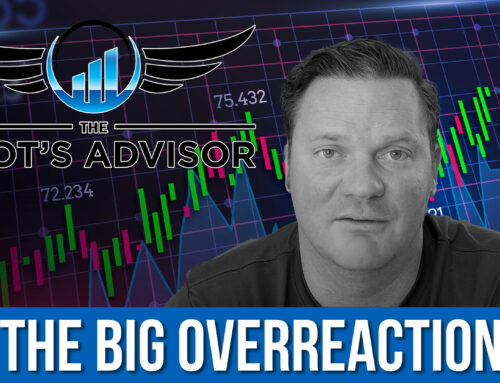WHY ARE GREECE AND CHINA WORRIES FADING?
Markets finally broke the losing streak, closing up for the week as worries about Greece and China faded. For the week, the S&P 500 gained 0.88%, the Dow rose 1.11%, and the NASDAQ grew 0.69%.[1]
Though a deal with Greece wasn’t reached on Sunday, both sides of the debt overhaul debate appear committed to finding a solution. Top-level officials from around Europe met to put together a deal that would be acceptable to creditors as well as Greece’s wary parliament. With Greek banks shut since June 28 and unlikely to reopen without additional funds, damage is already being done to the Greek economy.[2] As of Monday morning, an “Agreement” was finally reached between the two sides; now, attention turns to Greece’s parliament, which must ratify the deal.[3]
China’s stock market, which has been experiencing a bear market correction, stabilized last week. Is the free-fall over? Hard to say, but we’re not worried. China’s stock market and investing culture is immature, and the recent 30% drop in the Shanghai Composite Index came after a run-up of 150%.[4] Many analysts felt that Chinese markets were frothy and overpriced, so the correction isn’t unexpected. However, the stock meltdown does lower the expectation that China’s economy will reignite global growth.[5]
On the domestic side, the largest stock exchange in the U.S. experienced an outage last week that caused some to worry about the effects of software on markets. The technical fault that caused the New York Stock Exchange to halt trading for four hours on Wednesday gave investors pause but didn’t result in too much disruption to U.S. equity markets because orders were routed through other exchanges. While rumors of a malicious attack flourished, NYSE officials claimed a software glitch was to blame.[6]
In today’s software-reliant world, technical faults can and do happen. While other institutional traders who measure positions in microseconds can suffer serious losses when orders don’t go through in time, long-term investors aren’t usually affected by small glitches. Why? When you’re investing for long-term time horizons, the timing of individual trades doesn’t matter as much, and little ripples in the market generally won’t affect your long-term financial picture.
In the week ahead, Federal Reserve Chair Janet Yellen will be speaking about monetary policy to the House and Senate. Remarks that Yellen made on Friday suggest that she will probably reiterate the Fed’s intention to raise rates later this year as long as economic activity continues apace.[7] Earnings season will ramp up with many banks reporting this week as well. We’ll have more for you on earnings next week.
ECONOMIC CALENDAR:
Monday: Treasury Budget
Tuesday: Retail Sales, Business Inventories
Wednesday: PPI-FD, Empire State Mfg. Survey, Industrial Production, Janet Yellen Speaks 10:00 AM ET, EIA Petroleum Status Report, Beige Book
Thursday: Jobless Claims, Philadelphia Fed Business Outlook Survey, Housing Market Index, Janet Yellen Speaks 10:00 AM ET
Friday: Consumer Price Index, Housing Starts, Consumer Sentiment

Notes: All index returns exclude reinvested dividends, and the 5-year and 10-year returns are annualized. Sources: Yahoo! Finance and Treasury.gov. International performance is represented by the MSCI EAFE Index. Corporate bond performance is represented by the DJCBP. Past performance is no guarantee of future results. Indices are unmanaged and cannot be invested into directly.
Jobless claims rise to highest level since February. The number of Americans filing new claims for jobless benefits rose last week, though underlying trends remain stable. Seasonal factors may be to blame.[8]
Job openings soar. The number of available jobs rose again in May, showing that the economy had 5.4 million jobs to offer. Despite the increase, hiring remained flat, indicating that employers may be having trouble finding jobseekers with the right skills.[9]
Fed meeting minutes shows split. Meeting minutes from the June Federal Open Market Committee meeting show that economists were split, with some ready to vote for a rate increase. However, uncertainty around global risks won out, and officials chose to wait for more information.[10]
Consumer confidence rises more than expected in June. A gauge of how optimistic Americans feel about their economic prospects soared last month, stoking hopes that spending may boost economic growth.[11]
International Monetary Fund trims global growth expectations. Citing weaker-than-expected economic activity, weak inflation, and other factors, the IMF lowered its global growth projection to 3.3% from 3.5%.[12]
Investing involves risk including the potential loss of principal. No investment strategy can guarantee a profit or protect against loss in periods of declining values.
Diversification does not guarantee profit nor is it guaranteed to protect assets.
The Standard & Poor’s 500 (S&P 500) is an unmanaged group of securities considered to be representative of the stock market in general.
The Dow Jones Industrial Average is a price-weighted average of 30 significant stocks traded on the New York Stock Exchange and the NASDAQ. The DJIA was invented by Charles Dow back in 1896.
The Nasdaq Composite is an index of the common stocks and similar securities listed on the NASDAQ stock market and is considered a broad indicator of the performance of stocks of technology companies and growth companies.
The MSCI EAFE Index was created by Morgan Stanley Capital International (MSCI) that serves as a benchmark of the performance in major international equity markets as represented by 21 major MSCI indexes from Europe, Australia and Southeast Asia.
The Dow Jones Corporate Bond Index is a 96-bond index designed to represent the market performance, on a total-return basis, of investment-grade bonds issued by leading U.S. companies. Bonds are equally weighted by maturity cell, industry sector, and the overall index.
The S&P/Case-Shiller Home Price Indices are the leading measures of U.S. residential real estate prices, tracking changes in the value of residential real estate. The index is made up of measures of real estate prices in 20 cities and weighted to produce the index.
The 10-year Treasury Note represents debt owed by the United States Treasury to the public. Since the U.S. Government is seen as a risk-free borrower, investors use the 10-year Treasury Note as a benchmark for the long-term bond market.
Opinions expressed are subject to change without notice and are not intended as investment advice or to predict future performance.
Past performance does not guarantee future results.
You cannot invest directly in an index.
Consult your financial professional before making any investment decision.
Fixed income investments are subject to various risks including changes in interest rates, credit quality, inflation risk, market valuations, prepayments, corporate events, tax ramifications and other factors.
By clicking on these links, you will leave our server, as they are located on another server. We have not independently verified the information available through this link. The link is provided to you as a matter of interest. Please click on the links below to leave and proceed to the selected site.
- http://finance.yahoo.com/echarts
- http://www.cnbc.com/
- http://www.cnbc.com
- http://www.marketwatch.com/story/
- http://www.cnbc.com/2015/07/09
- http://www.npr.org/sections
- http://www.cnbc.com/2015/07/10
- http://www.foxbusiness.com/economy-policy
- http://www.usnews.com/news
- http://www.foxbusiness.com/economy-policy
- http://www.foxbusiness.com/economy-policy
- http://www.cnbc.com








